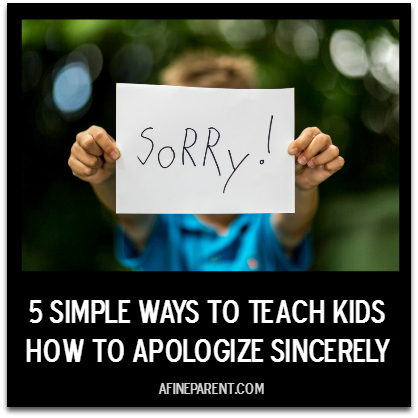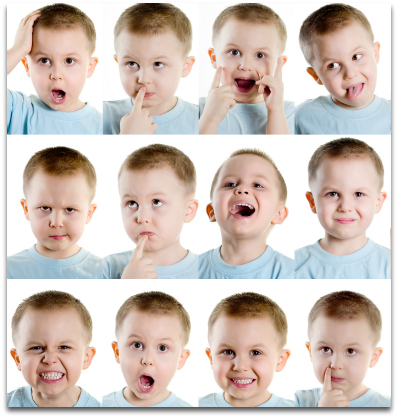 Isn’t it amazing that “I’m Sorry” is just two simple words, yet pack such an unbelievable punch?
Isn’t it amazing that “I’m Sorry” is just two simple words, yet pack such an unbelievable punch?
They have the ability to mend a hurt just by dancing across our lips in a sincere manner.
Yet, those two little words are the most difficult words for us to utter at times.
I remember as a child I was invited to my best friend’s pool party. She also invited some other friends from school. I was a few years younger than her, so I felt a little out of place.
My friend got busy with her school friends, and I felt as though she had forgotten about me. She didn’t do much to make me feel included so eventually tempers boiled. One thing led to another, and we ended up in an argument.
I remember going home in tears that day because that was the first time I had ever felt such rejection by such a close friend.
This was the first big argument between us. We had never been so mad at each other before as to stop speaking. This argument was different. We didn’t speak for days after the incident. Neither of us knew how to apologize and take that first step towards reconciliation.
Eventually, I remember her calling and apologizing for me feeling excluded. It may have been days since we talked, but those two magic words – “I’m sorry” – brought so much peace to my young heart. I quickly jumped in with my own apology for the hurtful things I had said during our argument. And just like that, the world tilted back on to its axis again.
In the years since then, I have seen many relationships – from childhood friendships all the way to marriages – being mended and torn apart. Whatever the underlying cause for conflict, in most cases, the mending usually starts with those two simple yet powerful words – “I’m sorry” – said sincerely. And in cases where things fall apart, it is often due to the lack of courage to say or mean those words.
I want for my kids to be able to use the power of these words for mending. I want them to be able to sincerely say “I’m sorry” and fix a situation when it runs away from them.
At the same time though, I don’t want to force this lesson upon them. Most of the power behind “I’m sorry” comes from the sincerity with which it is said. Sincerity is something I can demonstrate but can’t force my children to feel.
So how can I teach my kids how to apologize sincerely?
Well, here is what I have learned through my experiences so far –
#1 Tackle Your Personal Struggles… Out Loud!
Have you ever heard the saying, “Do as I say, not as I do?”
Yeah, doesn’t work.
Our children are going to do as we do regardless of what we say. We are their example. We don’t have to be perfect as parents (thank goodness because we all miss the mark at times.) However, we do have to be real with our kids.
We have to show them our struggles so they can learn from us how to overcome them in their own lives. One such struggle that comes in the way of “I’m Sorry” is pride.
 If we expect our children to learn how to apologize, the first place they should be able to look is to us (the parents).
If we expect our children to learn how to apologize, the first place they should be able to look is to us (the parents).
If you have a pride issue (as we all do at times), now is the time to tackle that monster and put it in its place. It is more important to raise well-balanced individuals than to be right all of the time.
If you are struggling with your own pride and have trouble apologizing, it’s OK – talk to your kids about it! Tell them how difficult it is for you to sometimes put pride in its place.
Show them your battle!
It will teach them as they get older to recognize when their pride is getting in the way, and they will know a few ways to combat it by watching you.
It is equally important to let our kids experience the healing power behind the words “I’m sorry” firsthand. When you do something wrong or handle a situation poorly with your child, swallow your pride and apologize to them. Show them a genuine apology. Walk them through how you were feeling in that moment. Let them inside your head.
This is teaching your child humility while also setting an example of when and how to apologize.
You are your child’s parent. No one else has more of an impact on their lives besides you. If you want your children to grow up knowing how and when to say, “I’m sorry,” take it upon yourself to lead the way!
#2 Help Sort Out Emotions
 Any time a conflict ensues, emotions fly high. It is hard as adults to sort out our emotions during a conflict. Put yourself in the shoes of your child and walk around a bit. They are young and still trying to figure a lot out. This is a time for you to step in and help them sort things out.
Any time a conflict ensues, emotions fly high. It is hard as adults to sort out our emotions during a conflict. Put yourself in the shoes of your child and walk around a bit. They are young and still trying to figure a lot out. This is a time for you to step in and help them sort things out.
Talk to your child about how they are feeling. Ask questions but let them do most of the talking. You might want to ask questions like: What happened? How did that make you feel? How are you feeling now?
My middle son has a lot of emotions! He is one that if he is feeling something, he feels it so much that it overwhelms him at times. Staying calm and helping him walk through his feelings allows him to feel them and then move toward a solution.
By helping your child sort through their feelings, it allows them to understand that all of those emotions are okay to feel for a short time, but it also helps them to deal with them and move forward. Once they move forward, they can sort out the conflict and get one step closer to apologizing for their actions.
#3 Allow Them To Make The Choice
Telling your child to say sorry every time they do something wrong usually goes something like this:
Parent: “Say you are sorry!”
Child: “Sorry!” — in a whispered, muffled tone if your child is mild-natured; or a loud, defiant tone if your child is strong-willed.
Did the child really learn anything from that moment? Most likely not. They just knew that a parent got upset with them for something they had done and that they were forced to utter that dreaded word, “Sorry!”
In order for a child to truly learn how to apologize, they need to be allowed to make the decision themselves.
What if your child is just “not in the mood” to apologize, though?
Then it is the time to coach.
You need to pull them aside and help them to examine the situation. Ask questions like: “I saw what happened between you and (fill in the blank). If they did the same thing to you, how would you feel?”
Encourage them to put on the other person’s shoes and walk a few miles in them. However, let them make the choice to apologize or not instead of you forcing them to.
Amy McCready, a parenting expert and founder of Positive Parenting Solutions, suggests that you take these steps to help your children decide to apologize:
- Don’t lecture… instead help your child sort out their emotions.
- Skip punishing your child for their actions and help them find a way to make things right between them and the person they need to apologize to.
- Help them figure out how to apologize by role playing.
#4 Teach Your Child What An Apology Is And What It Isn’t
 Also, a lot of times kids don’t think to apologize simply because they don’t realize its importance. It is vital that our kids not just learn how to apologize when they need to but also understand the importance of saying, “I’m Sorry.”
Also, a lot of times kids don’t think to apologize simply because they don’t realize its importance. It is vital that our kids not just learn how to apologize when they need to but also understand the importance of saying, “I’m Sorry.”
A child needs to understand that an apology is something that you do when you genuinely feel bad for something you said or did to someone else. They need to understand that by saying, “I’m sorry” it doesn’t un-do what happened, but it does let the person know that you are going to try really hard to never do it again. It is also important our children realize that by apologizing when they do wrong it could help heal the hurt that someone else is feeling.
An apology is not a free pass.
According to Vicky Mlyniec of Parents.com, kids will use the words, “I’m Sorry” as a get-out-of-jail-free card. They think it will get them out of trouble, and they can get out of a sticky situation without true remorse for their wrong actions. She says it is important to remember to keep your own emotions in check and to encourage your child to apologize but to never force an apology. If you find your child trying to use an apology as a free pass, don’t get discouraged. It just means they are still learning.
It is important to remember that age will make all of the difference when teaching your children how to truly apologize for their actions. Vicky Mlyniec says that children under the age of 3 need to be told when to apologize and focus on the words. However, between the ages of 3-5 children should be able to start comprehending what they are doing is wrong. Forensic scientist Louis Krouss also agrees that children begin to understand and develop remorse around the age of 5-6.
#5 Teach Your Child The Golden Rule
The Golden Rule is to treat others as you wish to be treated. This is something I find myself telling our 3 boys a million times a day. It is a way that I am able to get their attention when they are fussing as brothers do. It forces them to put themselves in the other person’s situation. Ultimately, that is the only way to get our children to realize the full weight of their actions and to feel remorse that will make them want to apologize.
Post The Golden Rule around your house, say it to your children often, and teach them its meaning. Little phrases like this stick with us when we least expect it. It is a great little nugget to tuck away in your child’s mind.
The 2-Minute Action Plan for Fine Parents
For our quick contemplation questions today, let’s take a quick stock of how apologies are handled in our homes. Ask yourself this –
- Are your kids comfortable saying “I’m sorry” when they make a mistake? Or does pride get in the way? How can you help them overcome this hurdle?
- Do they understand that the power behind these words come from the sincerity with which it is said? Or do they use them as a quick, get-out-of-jail-free card?
- When you make mistakes as a parent (and we all do), do you apologize to your kids?
- Do you sincerely apologize to your spouse or other people in your life in front of your kids? It is very important for your kids to see apologies in action – are you giving them the opportunity to learn from observation?
The Ongoing Action Plan for Fine Parents
Over the course of the next week, pay particular attention to your interaction with your kids. If you find that you are in the wrong, make a conscious effort to swallow your pride and apologize sincerely to your kids.
Also, when you see your child in the wrong, don’t force them to say, “I’m Sorry!” Instead, help them sort through their emotions so you can get down to the meat and potatoes of the problem. Ask them questions that will encourage them to put themselves in the other person’s place. Let the choice to apologize be something they decide to do.
And take the time to explain to your child – both in words and through action — that an apology is a promise to try your hardest to not repeat the offense and NOT a free pass to keep yourself out of trouble.
I realize I have read this article almost last, it is surely a good piece, I have enjoyed reading it. Am pasting the Golden rule right away on a beautifully colored sticker for me and my 3 year old to begin with.
Thank you.
I am so glad you enjoyed the read! I like the idea of turning the ‘Golden Rule’ into a sticker. I’ve always used post-it notes or paper and tape to post it on the fridge or on doors around the house. A sticker would allow them to have a little reminder that could be carried with them through out the day. What a cool idea! Thank you!
It is such a pleasure reading this one which I am hoping to arm me in a very near future. Currently, my 26-month old toddler is starting to learn the concept. With minimal verbal output, he could only do an “I’m sorry” sign language whenever he sees me upset if he acts inappropriately. I taught him that sorry sign when he was still around 18 months but only recently he’s learning WHEN to use it even without some prompting from us. I guess role modelling as apologetic parents also help him learn the concept in the first place.
Sign language is a great idea for little ones. I did that with our youngest and it really helps them to express themselves!
I agree that leading by example is the best method to teach our children. They pay much closer attention than we often realize.
Wow, it is amazing you are starting so early, Vanessa! I think it will pay off beautifully as your son grows up. He is fortunate to have a mom like you 🙂 Good luck in your journey!
Thanks for this article! We are always working on this in our blended home of 4 kids! We definitely use a “make it right” approach, which sometimes is an apology and sometimes is a physical act. We also help the kids articulate “next time I will…” since we want to focus on how to do it differently next time more than the wrong that is already in the past. And in addition to apologizing to the kids when we mess up, my partner and I also apologize to one another in front of the kids. I think seeing that we aren’t perfect (and don’t expect them to be) is as important as the modeling they’re seeing of the apology.
One other thing I’ll add since our kids have gotten clever enough to try the “well I wouldn’t care” response to the Golden Rule – we actually use the Platinum Rule: “Treat others as *they* want to be treated.” With our 2 year old, we still walk through helping him think about how his sister feels and what he might like if he were feeling sad, etc. But with the 6 year olds and the 10 year old, it seems to work better to have them think about what treatment their sibling was hoping for or would most respond to now since they are such different kids.
And of course, despite our best intentions, we sometimes slip into reactive parenting, so thank you for these great reminders!
I like the ‘platinum rule’. That is very clever and something I haven’t tried with my kids as of yet.
So glad you found the article helpful and informative!
I agree! Sara, your ‘platinum’ rule is so cool. There’s a whole lot of drama going on in my daughter’s school about who is whose BFF and unsurprisingly, there are a lot of ruffled feathers… I will talk to my daughter about this. Thank you so much for sharing!